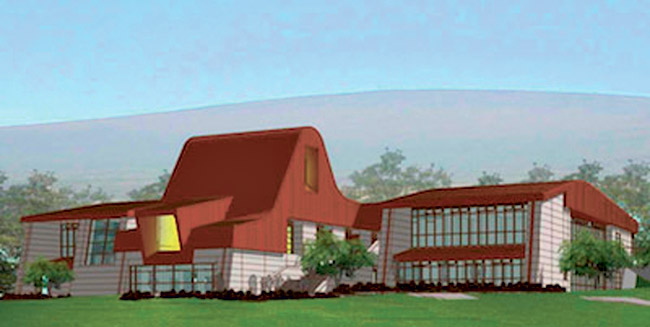Are Hilo Projects Money Well-spent?
Somebody surely will ask: Why are we spending $28 million in state money for the College of Hawaiian Language building at UH Hilo?
Why put all that public money into Hawaiian language when we need funds for command of the English language and delving into American political history and contemporary culture issues?
Why did we spend another $28 million from federal grants to build the Imiloa Astronomy Center at UH Hilo – which basically is an outreach program to assuage Hawaiian misgivings about all the telescopes atop Mauna Kea?
Good questions.
I think the Imiloa project was flat-out public relations. That’s why the center held seminars on hula and Hawaiian language during the Merrie Monarch Festival. Nothing to do with astronomy. Everything to do with “we care about Hawaiians.”
The new Hawaiian Language College building (Hale Olelo) is not about public relations, but I probably cannot dissuade those who begrudge scarce funds for purely ethnic-oriented education.
There used to be 6,000 languages on earth, and now there are 3,000. There used to be (in the ’70s) about 3,000 people who spoke Hawaiian, and they were mostly over age 50. Now there are at least 6,000, and they are mainly under 30. So we’re preserving a language. Is that essential?
Honestly, I can’t say. Hawaiian is an official language here, but languages and cultures have been subsumed by newcomers throughout the history of hominids. This “preservation of other cultures” is new.
If you talk to cultural advisers, such as Kalena Silva, they’ll say the traditional knowledge left by kupuna is important for present-day Hawaiians. How about non-Hawaiians? Well, maybe it benefits us, maybe not. Depends on whether we accept it. It’s surely not as meaningful for me as it is for Dr. Keiki Kawai’ae’a, the dean of the college.
But asking what we taxpayers get for our $28 million for the new Hale Olelo at Hilo is fair game.
American universities and colleges are under criticism for teaching too much theory and technical material and too little practical education that leads to good jobs. I like the theory and critical thinking part but realize we can’t just turn out thinkers. People need jobs and good ones that won’t go bye-bye.
The UH Hilo college claims it will turn out people who can get jobs – many, of course, as teachers in our growing Hawaiian language immersion schools, others as college teachers. And then there’s that new field of cultural advisers for hotels, government and many private ventures that engage the local public.
But it’s fair to ask: Given the huge new enrollment in Hawaiian language/studies here, are all those people going to find Hawaiian language/studies jobs? Where? Will the current “Hawaiian renaissance” peter out?
I suspect we’re in uncharted territory here.
We’ll need a century to know if our $56 million was well-spent.






